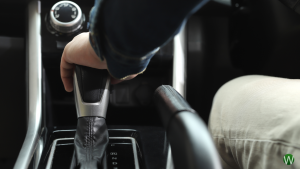The hazard perception test. It’s that part of the driving test that has everyone talking – and sometimes, scratching their heads in confusion. You’d think spotting a hazard would be pretty straightforward, right? But there are actually quite a few common mistakes that can trip learners up on test day.
So, what exactly causes people to stumble on the hazard perception test? And more importantly, how can you avoid making those same mistakes? Let’s dive in and break down those common errors, so you can approach the test with confidence.
1. The Late Click Conundrum: Reacting Instead of Anticipating
Imagine this: you’re watching a hazard perception clip and a pedestrian starts to cross the road without looking. You see them, you know it’s a hazard, but you hesitate for a moment too long before clicking. Sound familiar?
Why This Happens: It’s natural to want to be absolutely sure before you click, but that split-second of hesitation can be costly. The hazard perception test isn’t just about recognising hazards; it’s about recognising them as they develop.
The Fix: Shift your mindset from reaction to anticipation. Look for clues that a hazard might develop, even if it hasn’t fully formed yet. For example:
- Pedestrians: Are they looking at their phone? Stepping closer to the kerb? These are signs they might be about to cross without looking.
- Cyclists: Are they approaching a junction? Looking over their shoulder? These could indicate they’re about to turn or change lanes.
Remember: It’s better to click a little early and show you’re anticipating the hazard than to click late and miss out on points.
2. The Case of the Missed Hazard: Tunnel Vision Troubles
Ever watch a hazard perception clip and feel like you’re so focused on the car in front of you that you miss what’s happening elsewhere in the scene? That’s tunnel vision, and it’s a surefire way to miss crucial hazards.
Why This Happens: Our brains are wired to focus on what we perceive as the most immediate threat, which is often what’s directly in front of us. But on the road (and in the hazard perception test), danger can come from any direction.
The Fix: Force yourself to broaden your focus.
- Scan the Entire Scene: Actively move your eyes across the entire screen, from left to right and back again. Don’t just focus on the center of the road.
- Check Your Mirrors (Virtually!): Even though you’re not physically driving, get into the habit of mentally checking your mirrors – the sides and rearview mirror – to scan for hazards approaching from behind or the sides.
3. The Click Frenzy: When More Isn’t Always Better
We’ve all been there: a hazard pops up, and you find yourself clicking frantically, as if the number of clicks directly correlates to your score. Spoiler alert: it doesn’t.
Why This Happens: It’s easy to fall into the trap of thinking that more clicks equal a better score. But remember, the hazard perception test is assessing your judgment, not your clicking speed.
The Fix: Quality over quantity!
- One Hazard, One Click (Usually): In most cases, a single, well-timed click is enough to demonstrate that you’ve recognised a developing hazard.
- Resist the Urge to Spam: Clicking multiple times in quick succession for the same hazard won’t earn you extra points. In fact, it can actually count against you, as it might be interpreted as random clicking.
4. Misinterpreting the Situation: Not All Risks Are Created Equal
A car slowing down. A pedestrian waiting at a crossing. A parked car with its hazard lights on. Are these all hazards? Well, it depends.
Why This Happens: It’s easy to mistake any potential risk for a hazard. But the key is to distinguish between something that could be a hazard and something that’s actively developing into a hazard.
The Fix: Ask yourself: “Is this situation likely to cause me to take action as a driver?”
- Example 1: A car slowing down on an empty road might not be a hazard, but a car slowing down near a junction without indicating is a developing hazard.
- Example 2: A pedestrian waiting patiently at a crossing isn’t a hazard, but a pedestrian starting to cross the road without looking is.
Practice Makes Prepared: Your Key to Hazard Perception Success
The good news is that all of these common mistakes are completely avoidable with practice and a focus on developing your hazard perception skills. Take advantage of the many free and paid practice tests available online, and remember:
- Analyse Your Mistakes: Don’t just brush off incorrect answers. Take the time to understand why you made the mistake and how you can avoid it in the future.
- Practice in Real-Life Situations: The more you observe real-world driving situations, the better you’ll become at spotting developing hazards.
Remember, the hazard perception test isn’t about tricking the system; it’s about equipping you with the skills to be a safe and aware driver. By understanding common mistakes and focusing on developing your hazard perception skills, you’ll be well on your way to acing the test and navigating the roads with confidence!





